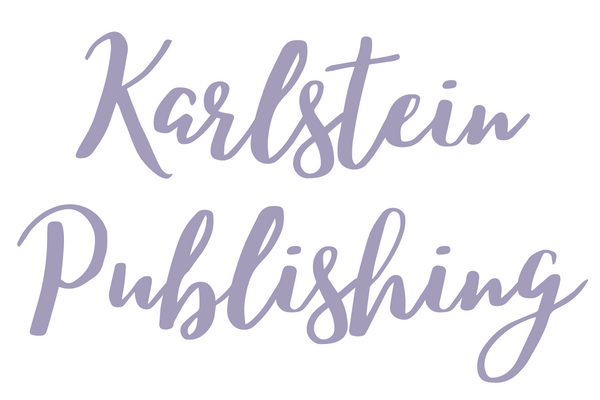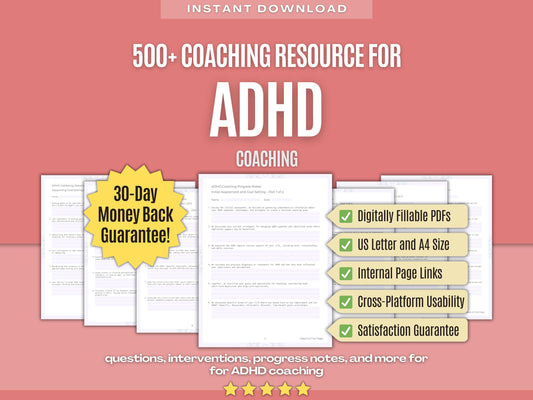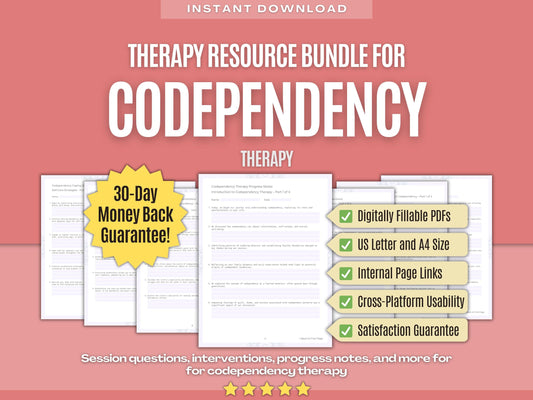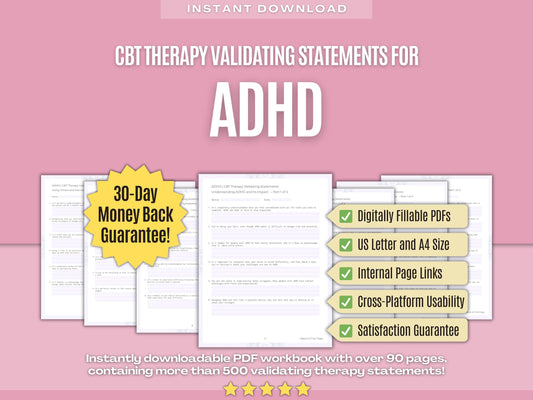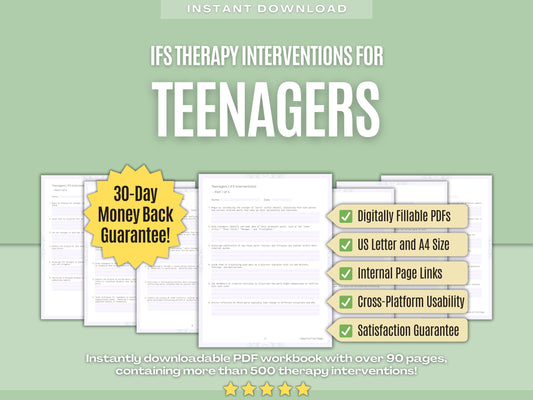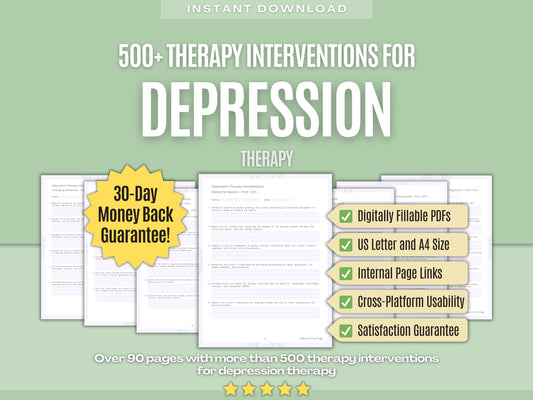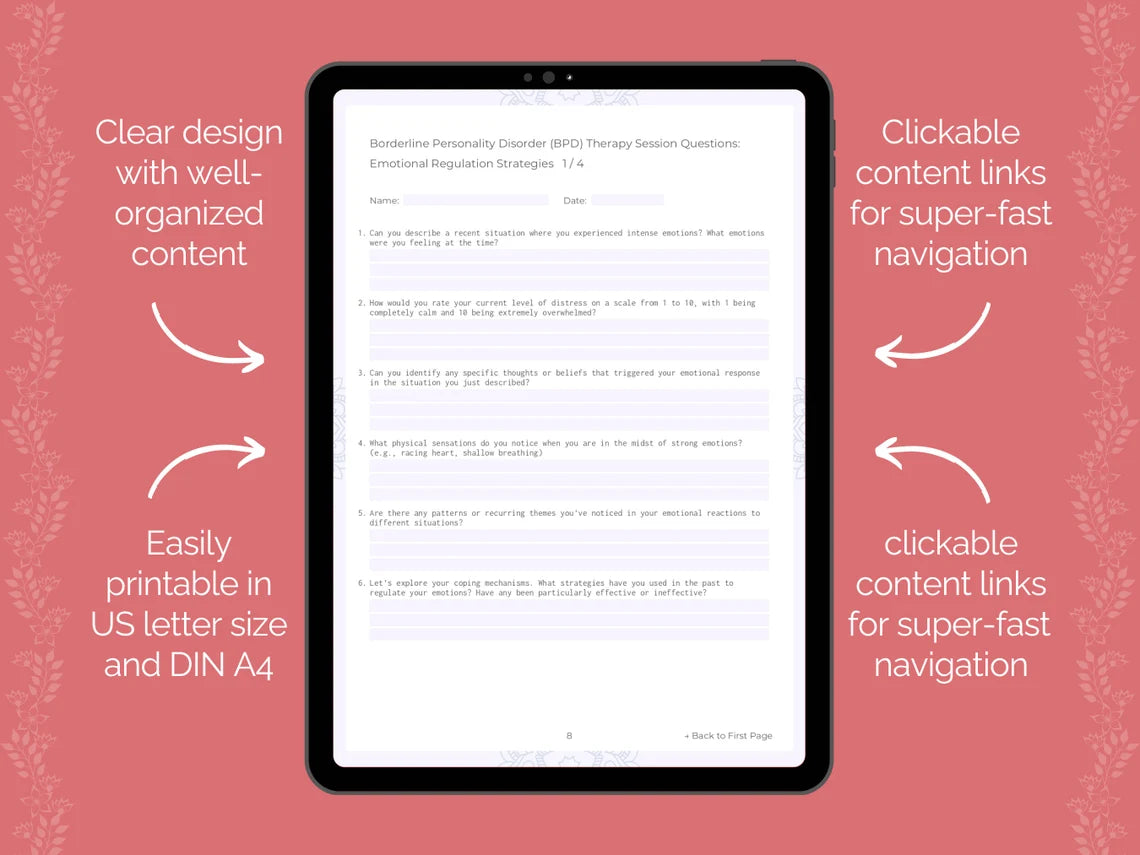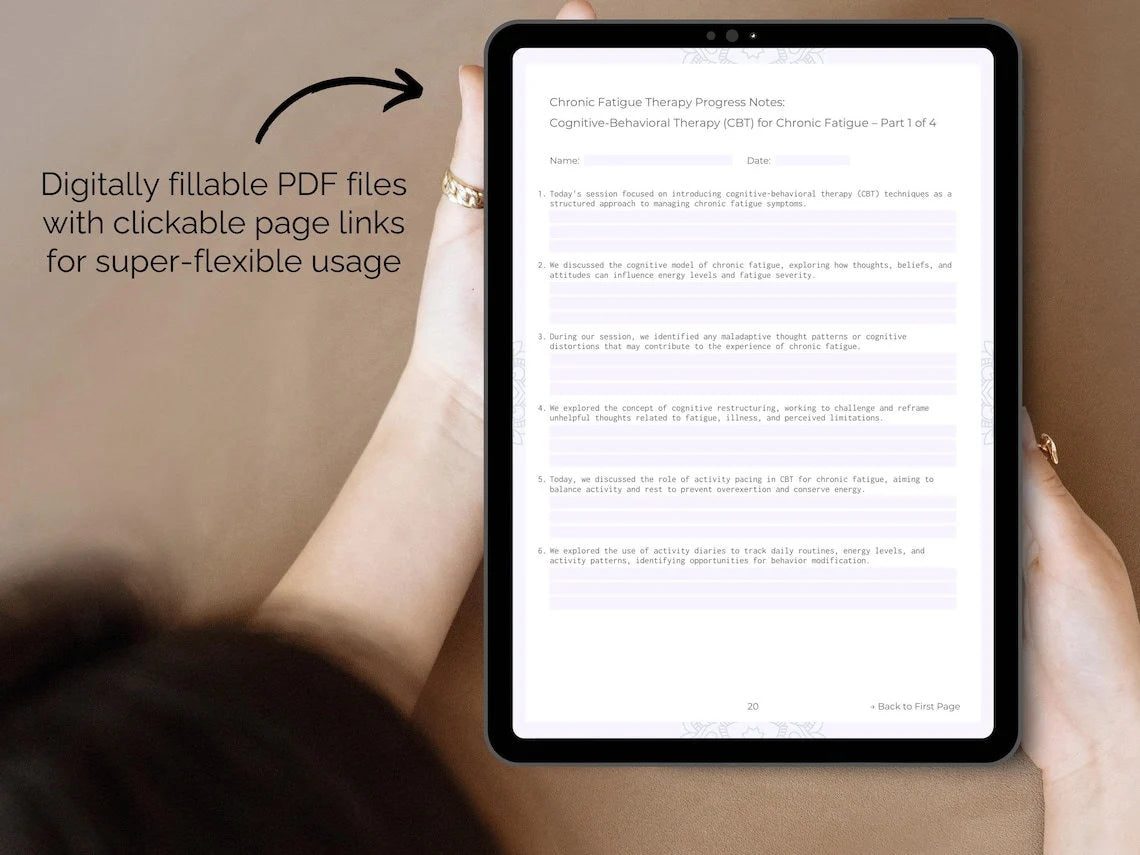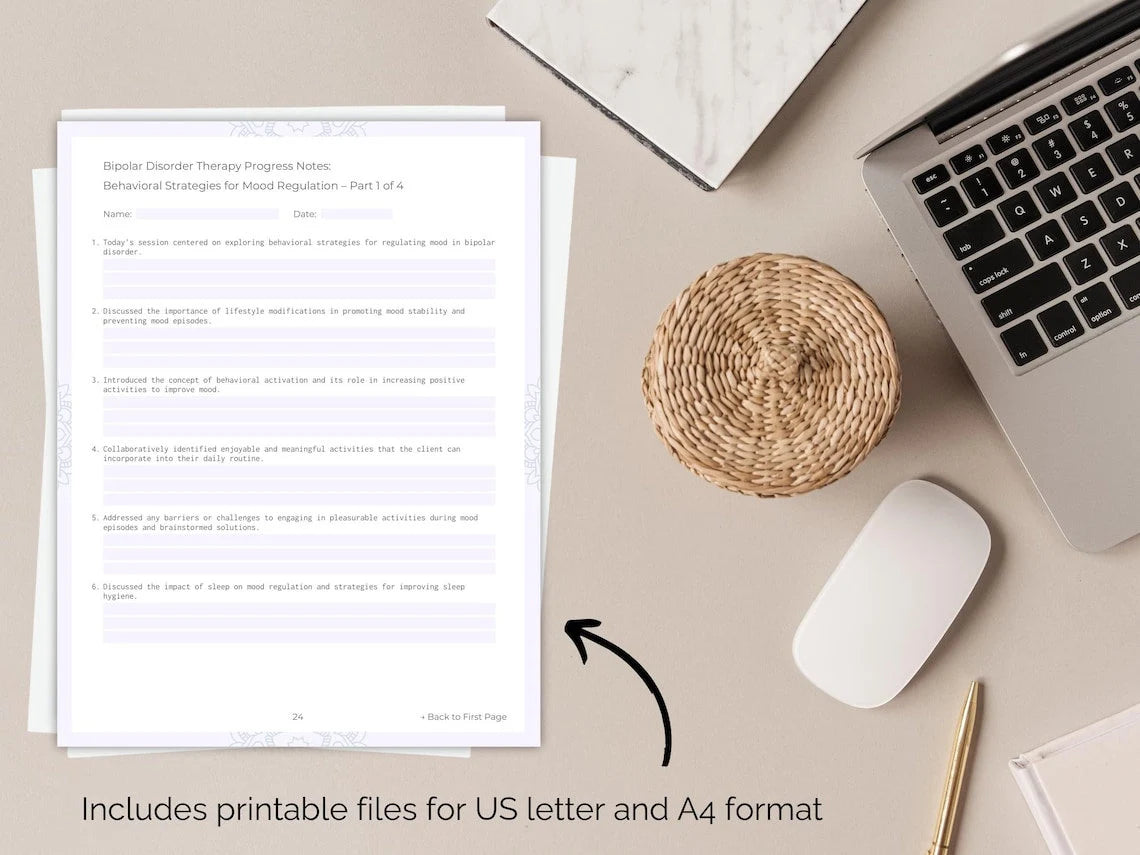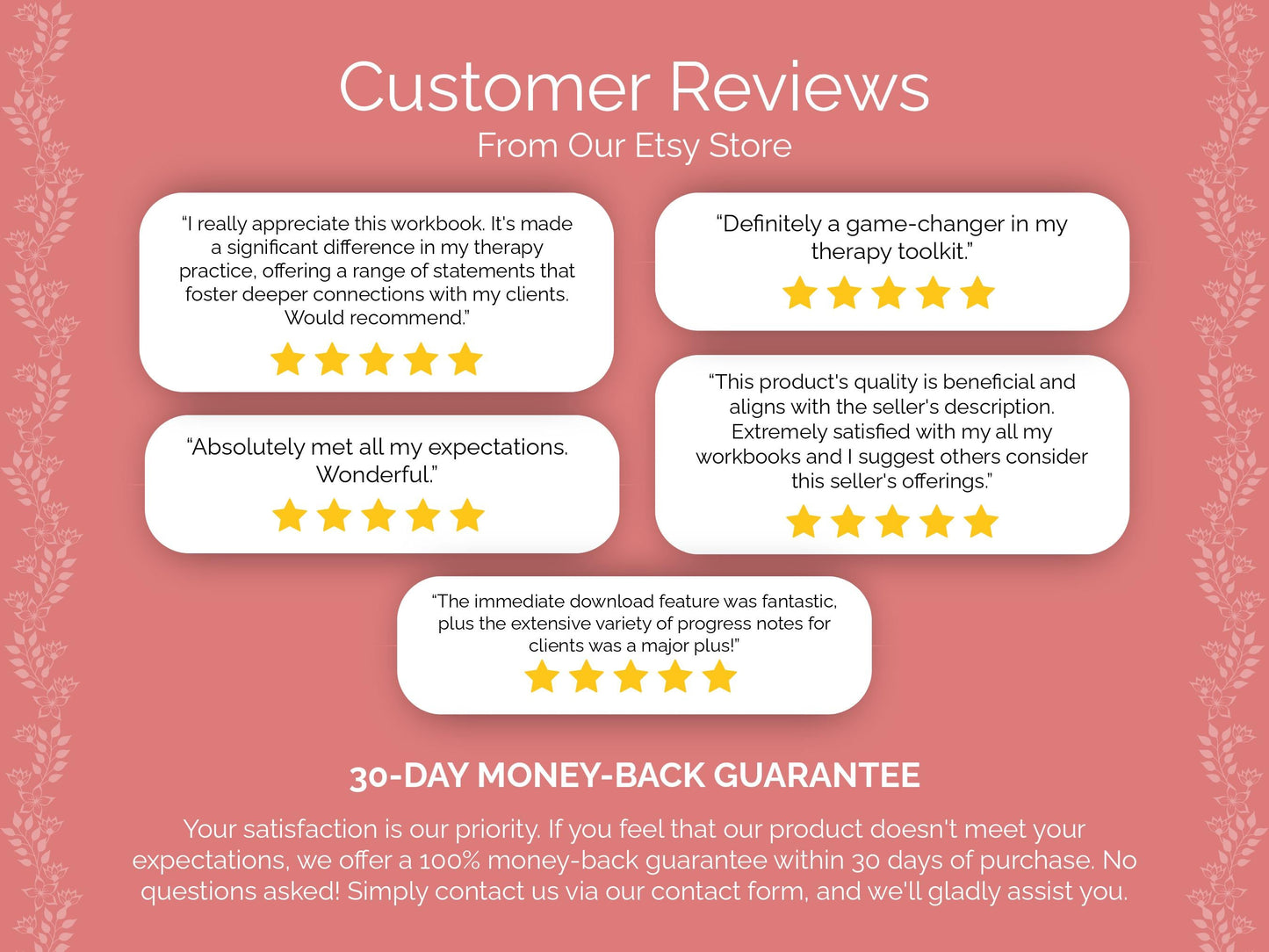Elevate Your Therapy and Guide Your Clients to Inner Healing with Our Hoarding Disorder Therapy Interventions! ✨
1. Session Start
- Begin the session by greeting the client warmly and inviting them to share how they've been since the last session.
- Conduct a brief mindfulness exercise to help the client become present and focused on the session.
- Inquire about any specific topics or issues the client would like to address during the session.
- Validate the client's efforts and achievements, no matter how small, to foster a sense of accomplishment and motivation.
- Explore any barriers or obstacles the client may have encountered in implementing therapeutic strategies since the last session.
- Use open-ended questions to facilitate exploration and deeper understanding of the client's thoughts, emotions, and behaviors.
- Collaboratively set the agenda for the session based on the client's priorities and therapeutic goals.
- Encourage the client to actively participate in the session by sharing their thoughts, feelings, and experiences.
- Utilize solution-focused techniques to help the client identify strengths and resources they can draw upon to address challenges.
- Set clear expectations for the session in terms of goals, tasks, and outcomes.
- Collaboratively establish ground rules for communication and behavior during the session to ensure a safe and respectful environment.
2. Understanding Hoarding
- Provide psychoeducation about hoarding disorder, including its definition, symptoms, and prevalence, to increase the client's understanding of the condition.
- Explore the client's personal experiences with hoarding, including when the behavior first started, how it has progressed over time, and any significant life events associated with it.
- Introduce the concept of clutter blindness and its impact on the client's perception of their living environment.
- Explore the client's relationship with possessions and how it may differ from that of individuals without hoarding disorder.
- Use case examples or stories to illustrate common experiences and challenges faced by individuals with hoarding disorder.
- Discuss the distinction between hoarding and collecting behaviors, highlighting the underlying motivations and consequences of each.
- Introduce the concept of insight in hoarding disorder and assess the client's level of awareness and acceptance of their hoarding behaviors.
- Explore the impact of hoarding on the client's relationships with family members, friends, and other significant others.
- Explore the client's goals and motivations for seeking treatment for hoarding disorder.
- Discuss comorbid conditions often associated with hoarding disorder, such as depression, anxiety disorders, and attention-deficit/hyperactivity disorder (ADHD).
- Introduce the concept of hoarding disorder as a chronic and treatable condition, offering hope and optimism for recovery.
3. Mindfulness for Clutter
- Begin by explaining the concept of mindfulness and its relevance to hoarding disorder therapy, emphasizing its ability to cultivate awareness and non-judgmental acceptance of present-moment experiences.
- Introduce the practice of mindful observation, encouraging the client to notice their thoughts, emotions, and physical sensations without trying to change or judge them.
- Facilitate discussions about the emotional attachments and beliefs associated with clutter, encouraging the client to explore these with curiosity and openness.
- Encourage the client to practice mindful decision-making when sorting through possessions, tuning into their inner wisdom and values to guide their choices.
- Explore the concept of impermanence in mindfulness practice, helping the client recognize that possessions are temporary and that letting go is a natural part of life.
- Use mindfulness techniques to help the client develop self-compassion and kindness towards themselves, especially when facing challenges or setbacks in the decluttering process.
- Explore the connection between mindfulness and impulse control, helping the client recognize and respond to urges to acquire or save items with greater awareness and intention.
- Guide the client in integrating mindfulness into their daily routines, such as mindful eating or mindful walking, to cultivate a sense of presence and awareness in all areas of life.
- Use mindfulness-based relapse prevention techniques to help the client anticipate and cope with triggers or setbacks in their decluttering efforts.
- Explore the potential benefits of mindfulness for stress reduction and emotional regulation, highlighting its role in promoting overall well-being.
- Provide psychoeducation about the neuroscience of mindfulness, explaining how regular practice can reshape the brain and strengthen neural pathways associated with attention and self-regulation.
4. Dialectical Behavior Therapy (DBT) for Emotional Tolerance
- Teach mindfulness skills to help clients observe and describe their emotions without judgment.
- Practice emotion regulation strategies like identifying and labeling emotions to increase emotional awareness.
- Utilize diary cards to track emotions, behaviors, and coping skills used throughout the week.
- Address any maladaptive coping mechanisms such as avoidance or substance use that may exacerbate emotional distress.
- Encourage self-soothing activities such as listening to calming music, taking a warm bath, or engaging in hobbies.
- Role-play scenarios to help clients rehearse effective responses to triggering situations.
- Teach interpersonal effectiveness skills to improve communication and assertiveness in relationships.
- Discuss the concept of dialectics, emphasizing the balance between acceptance and change in managing emotions.
- Encourage clients to build a strong support network and seek help from trusted individuals during times of distress.
- Identify and challenge cognitive distortions that may contribute to emotional distress.
- Use metaphors or analogies to help clients understand complex emotional concepts and coping strategies.
5. Interpersonal Therapy (IPT) for Relationship Impacts
- Begin by conducting an interpersonal inventory with the client to assess the impact of hoarding behaviors on their relationships with others.
- Use psychoeducation to increase understanding of the interpersonal dynamics underlying hoarding behaviors and their impact on relationships.
- Explore the client's attachment style and how it may influence their relationships and interactions with possessions.
- Use role-play or behavioral experiments to help clients practice assertive communication and boundary-setting with family members or loved ones affected by hoarding.
- Encourage clients to engage in activities that foster social connection and support, such as joining support groups or participating in community events.
- Use genogram or family mapping techniques to visualize and explore the client's family dynamics and their influence on hoarding behaviors.
- Foster empathy and understanding between the client and their loved ones by exploring the perspectives and experiences of each party.
- Collaboratively develop strategies for repairing and strengthening relationships damaged by hoarding behaviors, focusing on rebuilding trust and communication.
- Explore the client's values and goals related to relationships, helping them identify areas for improvement and growth.
- Use role-reversal exercises to help clients gain perspective on how their hoarding behaviors may impact others and vice versa.
- Encourage clients to practice self-compassion and forgiveness towards themselves and others affected by hoarding, recognizing that change is a gradual process.
6. Emotion-Focused Therapy (EFT) for Attachment to Items
- Begin by creating a safe and empathetic therapeutic environment where clients feel comfortable exploring their emotions and attachment to items.
- Encourage clients to express and process their emotions related to hoarding behaviors, including sadness, anxiety, guilt, or shame.
- Use emotion-focused techniques such as experiential imagery or guided visualization to help clients access and express deeper layers of emotion related to their attachment to items.
- Encourage clients to identify and challenge any negative or self-critical beliefs they may hold about their attachment to possessions.
- Explore the client's interpersonal relationships and how their attachment to items may be influenced by past or current attachment experiences with others.
- Facilitate emotion-focused experiential exercises such as writing letters to objects or engaging in symbolic rituals to express and process attachment-related emotions.
- Encourage clients to practice self-compassion and self-soothing techniques when experiencing distressing emotions related to their attachment to possessions.
- Foster emotional regulation skills by teaching clients techniques such as deep breathing, progressive muscle relaxation, or grounding exercises.
- Encourage clients to engage in self-care activities that nurture their emotional well-being and reduce reliance on possessions for emotional regulation.
- Use narrative techniques to help clients construct alternative narratives about themselves and their relationship with possessions, fostering a sense of agency and empowerment.
- Encourage clients to explore the possibility of creating meaningful connections with others as a way of meeting their emotional needs outside of possessions.
7. Psychodynamic Understanding of Accumulation
- Begin by exploring the client's early attachment experiences, examining how these may have influenced their relationship with objects and possessions.
- Encourage the client to reflect on their earliest memories of acquiring and discarding items, paying attention to the emotional significance attached to these experiences.
- Utilize dream analysis to uncover symbolic meanings behind the client's accumulation-related dreams or recurring themes.
- Explore the client's relationships with specific objects, examining how these objects may symbolize important figures or emotions in their life.
- Discuss the concept of transference and how the client may project feelings or attributes onto their possessions or the therapist.
- Use projective techniques such as drawing or storytelling to help the client express unconscious thoughts or feelings related to their accumulation.
- Encourage the client to explore any ambivalence they may feel about their accumulation behaviors, recognizing the conflicting emotions that may arise.
- Explore the client's fears and anxieties about discarding items, examining the underlying reasons for their attachment.
- Explore the client's relationship with authority figures and how it may influence their willingness to engage in therapy and make changes.
- Discuss the role of shame and guilt in perpetuating accumulation behaviors, exploring strategies for self-compassion and acceptance.
- Encourage the client to explore alternative ways of meeting their emotional needs that do not involve accumulation.
8. Healing Rhythms in Music
- Invite the client to create a playlist of music that elicits various emotions, encouraging exploration and reflection on the connections between music and mood.
- Guide the individual in composing their own music or lyrics as a means of self-expression and processing emotions related to hoarding behaviors.
- Introduce guided imagery exercises accompanied by soothing music to help the client visualize their ideal living environment and goals for decluttering.
- Recommend the use of uplifting and empowering songs as affirmations to boost self-esteem and confidence throughout the recovery process.
- Suggest the creation of a personalized soundtrack representing different stages of the client's journey towards recovery from hoarding disorder.
- Guide the individual in exploring the lyrics of songs related to themes of attachment, letting go, and transformation, facilitating deeper insight into hoarding behaviors.
- Provide opportunities for the client to explore various genres of music to identify ones that resonate with them and evoke positive emotions.
- Introduce the concept of rhythm as a metaphor for finding balance and harmony in life, using drumming or percussion activities to explore these themes.
- Explore the client's cultural background and heritage through music, incorporating traditional songs or instruments into therapy sessions to honor their identity.
- Recommend the use of music as a transitional cue during daily routines, signaling shifts in focus or activities to support organization and time management.
- Explore the therapeutic potential of nature sounds or ambient music to create a calming and grounding atmosphere during therapy sessions.
9. Concluding Session Reflections
- Reflect with the client on their progress throughout the therapy journey, highlighting achievements and areas of growth since the beginning of treatment.
- Review the goals set at the beginning of therapy and discuss whether they have been met or if any adjustments need to be made based on current circumstances.
- Discuss strategies for maintaining momentum and continuing progress beyond therapy, emphasizing the importance of ongoing self-care and support.
- Provide validation and affirmation for the client's efforts and commitment to personal growth and change throughout the therapy process.
- Discuss potential challenges or triggers that may arise in the future and brainstorm coping strategies to address them proactively.
- Reflect on the therapeutic relationship and the client's experiences within the therapeutic environment, fostering closure and acknowledging the bond formed during sessions.
- Discuss any lingering questions or uncertainties the client may have about hoarding disorder or the recovery journey.
- Reflect on changes in the client's mindset or perspective regarding possessions and clutter, noting shifts in beliefs or attitudes towards hoarding behaviors.
- Discuss the importance of self-compassion and self-forgiveness in the face of setbacks or challenges, emphasizing that recovery is a journey with ups and downs.
- Offer closure rituals or activities to mark the end of therapy sessions, such as writing a goodbye letter to hoarding behaviors or engaging in a symbolic decluttering activity.
- Reflect on the client's commitment to ongoing growth and personal development, reinforcing their agency and autonomy in creating positive change in their life.
10. Path Forward
- Collaboratively develop a relapse prevention plan with the client, identifying potential triggers and warning signs of hoarding behaviors.
- Discuss the importance of ongoing self-monitoring and reflection on hoarding behaviors, encouraging the client to track their progress and identify areas for continued growth.
- Provide psychoeducation on the nature of hoarding disorder and the importance of continued vigilance and self-awareness in managing symptoms.
- Collaboratively set short-term and long-term goals related to maintaining progress and preventing relapse, ensuring they are realistic and achievable.
- Explore strategies for managing urges to acquire or save items, such as practicing mindfulness or engaging in alternative activities to distract from cravings.
- Offer resources for building organizational and time management skills, helping the client maintain order and structure in their daily life.
- Discuss potential setbacks or challenges the client may encounter and brainstorm coping strategies to address them effectively.
- Explore strategies for managing difficult emotions without resorting to hoarding behaviors, such as practicing mindfulness, journaling, or seeking professional support.
- Offer resources for building resilience and coping skills, such as cognitive-behavioral therapy techniques or stress management strategies.
- Discuss the role of gratitude in maintaining a positive outlook and resilience in the face of challenges, encouraging the client to cultivate a daily practice of gratitude.
- Explore strategies for managing time and energy effectively, helping the client prioritize activities and commitments that align with their values and goals.
We hope that our therapy interventions for Hoarding Disorder therapy will help you to elevate your therapy practice and guide your clients to inner healing! Do you need more therapy interventions for Hoarding Disorder therapy? Find them all in our Digital Workbook! Or do you have any questions or suggestions for us? Please feel free to contact us at any time!
